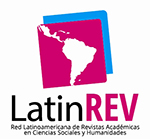CALL FOR PAPERS | Monographic Pedagogical Press
Introduction
Human beings throughout our history have felt the need to communicate, verbally and in writing, with rudimentary materials and with more elaborate ones, with our peers.
The advent of the printing press made it much easier for us to communicate with a large number of people. Periodicals marked a before and after for information in society, and the world of education, always very open to the new changes occurring in other environments, was able to see the usefulness of this medium.
The pedagogical periodical press has meant a different way of communicating with the outside world, with the non-purely educational world, but it has also become a platform with which to show the concerns of its protagonists, those who do the teaching, those of others who live the teaching-learning process, but it has also served to initiate the youngest children into the world of reading and writing. These publications have also served to vindicate teachers at a time in history when their role was considered fundamental, but their living conditions and profession left much to be desired. In some cases, they have become platforms for training, promoting new methodologies and the incorporation of different school dynamics.
Pedagogical periodicals are a public testimony of progress or setbacks in the education system, but also a communication bridge for the school community to defend their rights and to be informed of educational developments. They are a means of publicising pupils' school productions, as well as literary texts, poems and other texts of a cultural nature written by teachers, families, administrative and service staff, inspectors, etc. All of this contributes to making the educational press part of a country's educational heritage, as it can hold historical significance for citizens after their time at school.
The educational press has changed as has the society in which it is immersed. Today we are talking about digital newspapers where before there were only school bulletins, for example, which means that we have gone from making face-to-face consultations in schools, trade unions, educational administration or newspaper libraries to accessing the different documentary repertoires in which they are found, from anywhere in the world and at any time, with a single click.
However, although the mediums of these media may change, what will not change is the main function of pedagogical periodicals, which is to bring society closer to the reality of education in a specific historical period.
Theoretical and empirical articles, case studies and comparative studies are therefore welcome. Interviews and reviews of books published on the subject are also welcome:
THEMATIC AXES
- The schoolchildren's press
- The press of university students.
- The press of teachers, both primary and secondary school teachers.
- University teachers' press.
- The press of religious congregations.
- The educational administration press.
- The educational press in the dictatorships of the 20th century.
- The press of teachers' associations and trade union movements related to education.
- Concrete experiences with the pedagogical press in the classroom.
- The educational press as a didactic use.
- Pedagogical press on paper versus digital.
- The educational press in different contexts.
- Educational sections in the general press.
Original papers are accepted from anywhere in the world and written in portuguese, spanish, english and french.
CalendarManuscript submission: until 30th of April 2023
Notification of authors: until 15th of August 2023
Expected publication: 2nd half of 2023
Email for submissions and queries RLE submission rulesContributions will have a length between 1200 -1500 characters with spaces, including the abstract of 1,500 words in each of the four languages.
Figures, tables (jpeg), images (jpeg).
See also: Author Guidelines







